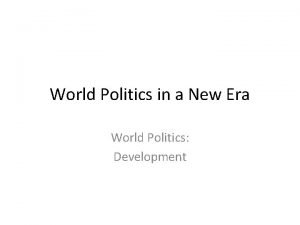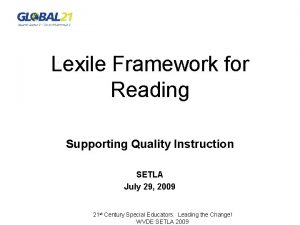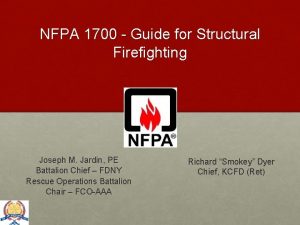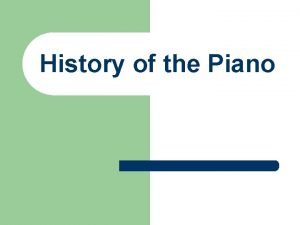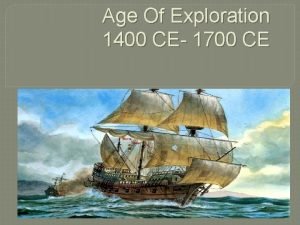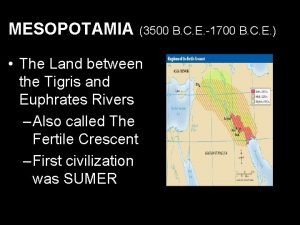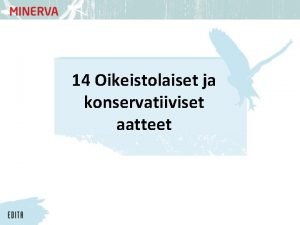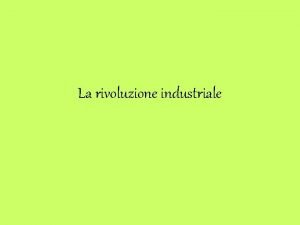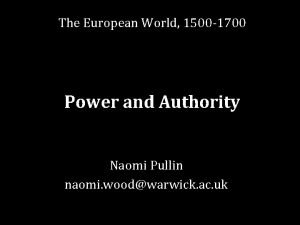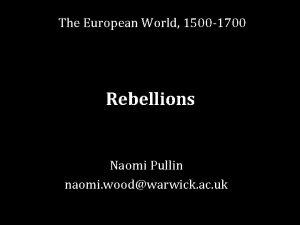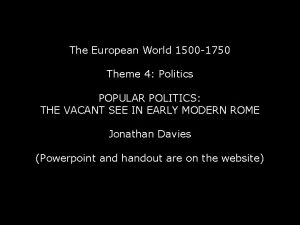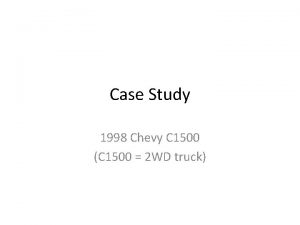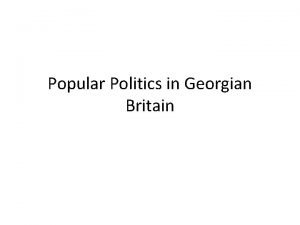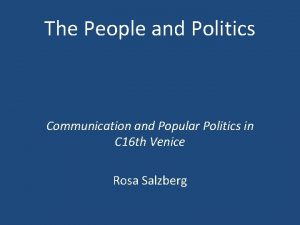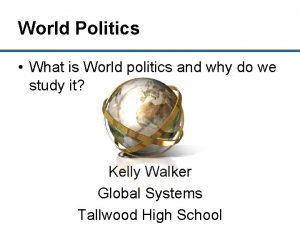The European World 1500 1700 Popular Politics case











- Slides: 11

The European World, 1500 -1700 Popular Politics case study: Riots and public executions in early modern England Naomi Pullin naomi. wood@warwick. ac. uk

Popular politics? Ordinary people often overlooked as actors in political process. • Cultural historians, e. g. E. P. Thompson ‘The moral economy of the English Crowd’ – food rioters not just upset about loss of resources, but identifying what customs and practises violated. • Patrick Collinson – a ‘new political history, which is social history with the politics put back in, or an account of political processes which is social’. •

Case study: The Oxfordshire Rising, 1596 Key themes: 1. Meaning attached to it by both participants and state 2. What it reveals about the early modern political process 3. The place of public execution in popular politics.

Oxfordshire, 1596 • Bartholomew Steer, a carpenter, plans an uprising against local gentry The plan: • to meet 21 Nov. on Enslow Hill • ‘a rising of the people to pulle down the enclosures’ • Would march to London and get support from London apprentices But plan changes: • Plot to raid homes of gentry responsible for enclosure and assassinate them and families • Only four men showed up, wait for 2 hrs, then disband Enslow

A Rising of the People? • Rebels described as a ‘rising of the people’. • Arrested, tried for high treason and sentenced to be hanged, drawn and quartered The setting of the revolt: • Four years of harvest failure > high prices and food shortages • 1590 s – discontent across England. Food riots in Kent and London. • September 1596 – people of Oxfordshire petition Lord Lieutenant, Lord Norris, for relief. Complain about illegal enclosures pushing up rental costs, but petition ignored. • Riot = extension of the petitionary dialogue.

The rule of ‘custom’ • Enslow Hill chosen to stage protest = site of another popular uprising in Oxfordshire in 1549. • Plans to attract London apprentices, showing awareness of political climate in rest of country • 21 Nov. chosen because local yeoman would be absent from the county to sit on King’s Bench

The response to the rising • Conspirators and ringleaders arrested, brought to London, tortured and then tried by Sir Edward Coke. • Lord Norris sends petition to London. • Tudor state takes action against enclosure – antienclosure statutes issued 1597. • Men sentenced for high treason and to be hanged, drawn and quartered at the site of the rebellion on Enslow Hill.

Crowds and public executions • • • Execution = means for Tudor state to reassert authority. Being hanged, drawn and quartered reflects damage caused to body politic. Public execution = ceremony and ritual Drama of execution enhanced through pardons. Dying words reinforced values and ideas about good behaviour, obedience and repentance.

The place of the crowd? • Michel Foucault: executions ‘a theatre of punishment’; ‘spectacles of power with the physical strength of the sovereign beating down upon the body of his adversary and mastering it’. • But does the crowd have any agency in these spectacles of punishment? • Thomas Laquer: crowd = central and willing participants. • Crowd has some influence over who was pardoned.

The execution of Charles I, 30 Jan. 1649

Conclusions? • Ordinary people active in political process: as petitioners and rioters; have knowledge of wider political climate • Custom and identity in popular politics. • Disproportionate gov. response reveals fragility of power

